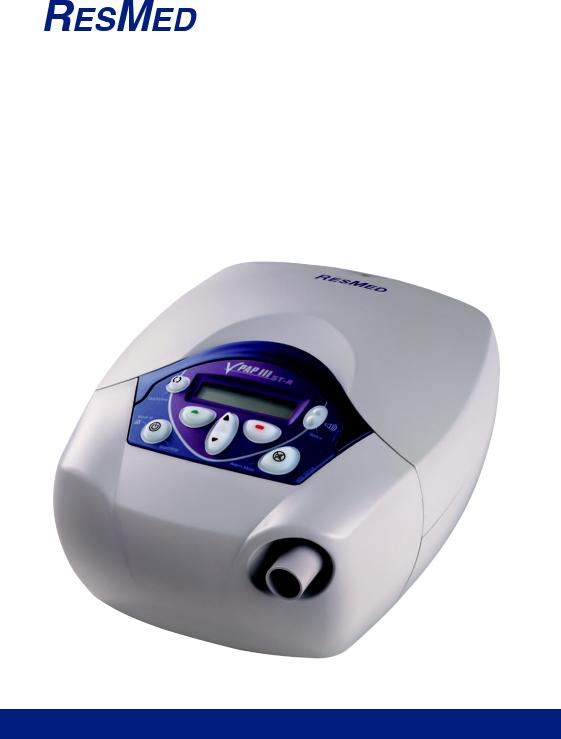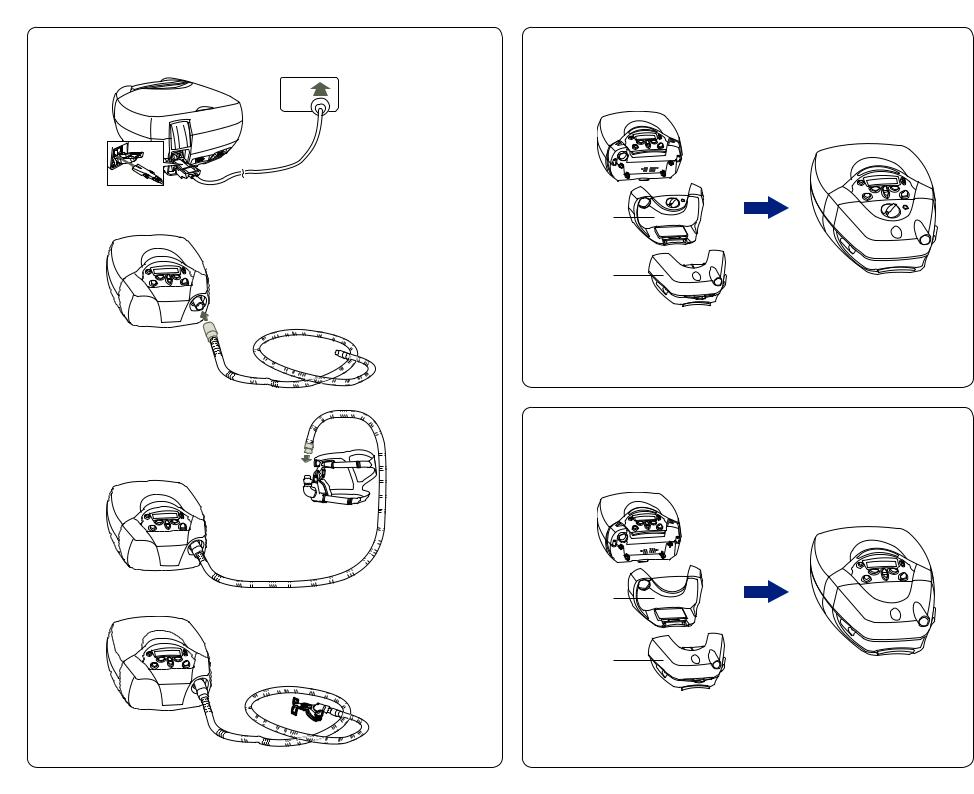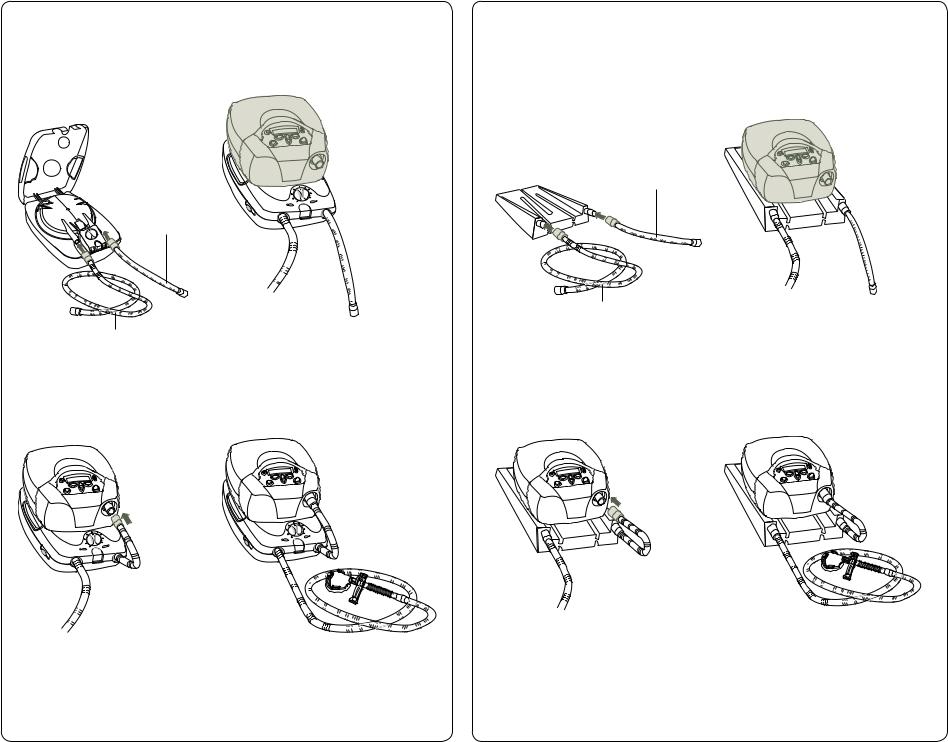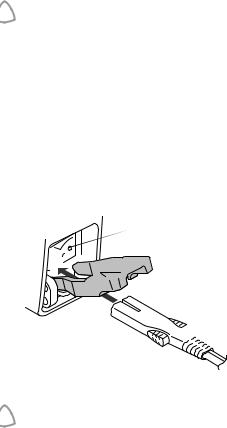Resmed Vpap III St-a User Manual

VPAP™ III ST-A
User Manual
English

VPAP™ III ST-A
Illustrations
A SYSTEM COMPONENTS
LCD screen
Removable
front cover
1
Air filter cover
Power switch
Power sockets
2 |
Auxiliary port (15-pin) |
B HUMIDIFIERS
Component of 248602/1
1 HumidAire 2i™ |
2 HumidAire 2iC™ |
Handle
Control panel
Air outlet
3 HumidAire™ |
4 ResMed Passover |
Serial communications
port (9-pin)
C OTHER ACCESSORIES
|
|
|
|
Ltd. |
1 |
3 m |
2 |
52 cm |
|
|
|
|
ResMed |
||||
3 |
4 |
5 |
2 m |
|
|
|
|
|
|
|
|
|
© 2012 |
|
|
|
|
© 2012 ResMed Ltd.
© 2012 ResMed Ltd.

D SETTING UP THE VPAP III ST-A
1
2
3
4
E HUMIDAIRE 2i AND VPAP III ST-A
Docking
station
Water chamber
© 2012 ResMed Ltd.
F HUMIDAIRE 2iC AND VPAP III ST-A
|
Docking |
|
station |
|
Water |
© 2012 ResMed Ltd. |
chamber |
© 2012 ResMed Ltd. |

G USING A HUMIDAIRE HUMIDIFIER |
H USING A PASSOVER HUMIDIFIER |
(52 cm)
(52 cm)
|
1 |
2 |
1 |
2 |
(2 m/3 m) |
(2 m/3 m)
3 |
4 |
3 |
4 |
© 2012 ResMed Ltd. |
© 2012 ResMed Ltd. |

I |
REPLACING THE AIR FILTER |
1
2
3
© 2012 ResMed Ltd.

VPAP™ III ST-A
User Manual
English
248602/1 2012-02
Contents |
|
Introduction . . . . . . . . . . . . . . . . . . . . . . . . . . . . . . . . . . . . . . . . . . . . . . . |
1 |
User/Owner Responsibility |
1 |
Medical Information . . . . . . . . . . . . . . . . . . . . . . . . . . . . . . . . . . . . . . . |
1 |
What the VPAP III ST-A is Intended for |
1 |
Contraindications |
1 |
Warnings |
2 |
Cautions |
2 |
Adverse Effects |
3 |
The VPAP III ST-A System . . . . . . . . . . . . . . . . . . . . . . . . . . . . . . . . . . |
5 |
Masks |
5 |
Humidifiers |
6 |
Accessories |
6 |
Setting up the VPAP III ST-A System . . . . . . . . . . . . . . . . . . . . . . . . |
7 |
Setting up the VPAP III ST-A |
7 |
Attaching a Humidifier |
8 |
Using the LCD Screen and Keypad |
10 |
Starting Treatment . . . . . . . . . . . . . . . . . . . . . . . . . . . . . . . . . . . . . . . . |
13 |
Stopping Treatment |
14 |
Using the HumidAire 2i Warm-up Feature |
14 |
Using the Mask-Fitting Feature |
14 |
Cleaning and Maintenance . . . . . . . . . . . . . . . . . . . . . . . . . . . . . . . . |
17 |
Daily Cleaning |
17 |
Weekly Cleaning |
17 |
Periodic Cleaning |
17 |
Testing the Alarm |
18 |
Replacing the Air Filter |
18 |
Servicing |
18 |
How to Use the VPAP III ST-A Menus . . . . . . . . . . . . . . . . . . . . . . |
19 |
Ramp Screen |
19 |
How to Use the Standard Menu |
19 |
How to Use the Detailed Menu (if enabled by your clinician) |
20 |
Menu Functions (Detailed Menu only) |
22 |
Treatment Screens |
25 |
Non-vented Mask Alarm Screen |
27 |
The Alarms . . . . . . . . . . . . . . . . . . . . . . . . . . . . . . . . . . . . . . . . . . . . . . . |
29 |
Alarms Troubleshooting |
29 |
Helpful Hints . . . . . . . . . . . . . . . . . . . . . . . . . . . . . . . . . . . . . . . . . . . . . |
33 |
Troubleshooting . . . . . . . . . . . . . . . . . . . . . . . . . . . . . . . . . . . . . . . . . . |
35 |
Contents iii
System Specifications . . . . . . . . . . . . . . . . . . . . . . . . . . . . . . . . . . . . 37
Limited Warranty . . . . . . . . . . . . . . . . . . . . . . . . . . . . . . . . . . . . . . . . . 45
Index . . . . . . . . . . . . . . . . . . . . . . . . . . . . . . . . . . . . . . . . . . . . . . . . . . . . . 47
iv
Introduction
The VPAP™ III ST-A is a bilevel pressure support ventilator specifically designed for non-invasive mask ventilation.
This user manual contains the information you need for the correct use of your VPAP III ST-A.
User/Owner Responsibility
The user or owner of this system shall have sole responsibility and liability for any injury to persons or damage to property resulting from:
•operation which is not in accordance with the operating instructions supplied
•maintenance or modifications carried out unless in accordance with authorized instructions and by authorized persons.
Please read this manual carefully before use.
This manual contains special terms and icons that appear in the margins to draw your attention to specific and important information.
•Warning alerts you to possible injury.
•Caution explains special measures for the safe and effective use of the device.
•Note is an informative or helpful note.
Medical Information
What the VPAP III ST-A is Intended for
The VPAP III ST-A system is intended to provide non-invasive ventilation for patients with respiratory insufficiency or obstructive sleep apnea (OSA), in the hospital or home.
Contraindications
The VPAP III ST-A should not be used if you have an insufficient respiratory drive to endure brief interruptions in non-invasive ventilation therapy. The
VPAP III ST-A is not a life support ventilator and may stop operating with power failure or in the unlikely event of certain fault conditions.
If you have any of the following conditions, tell your doctor before using the VPAP III ST-A:
•acute sinusitis or otitis media
•epistaxis causing a risk of pulmonary aspiration
•conditions predisposing to a risk of aspiration of gastric contents
•impaired ability to clear secretions
•hypotension or significant intravascular volume depletion
Introduction 1
•pneumothorax or pneumomediastinum
•recent cranial trauma or surgery.
Warnings
•The entire manual should be read before using the VPAP III ST-A.
•Advice contained in this manual should not supersede instructions given by the prescribing physician.
•The VPAP III ST-A should be used with masks and accessories recommended by ResMed or the prescribing physician. Use of incorrect masks and accessories may adversely affect the function of the VPAP III ST-A.
•The VPAP III ST-A is designed for use with masks that allow exhaled gases to be flushed out through vent holes. Exhaled gases will be rebreathed if the mask is worn with the machine turned off, or the vent holes are occluded. If this occurs over prolonged periods, suffocation may occur.
•In the event of power failure or machine malfunction, remove the mask.
•The VPAP III ST-A can be set to deliver pressures up to 30 cm H2O. In the unlikely event of certain fault conditions, pressures up to 40 cm H2O are possible.
•The VPAP III ST-A is not suitable for use in the vicinity of flammable anesthetics.
•The VPAP III ST-A should not be used with anesthetized patients, whose breathing depends entirely on mechanical ventilation.
•If oxygen is used with the VPAP III ST-A, the oxygen flow should be stopped when the device is not operating. If oxygen flow continues when the device is not operating, oxygen may accumulate within the device and create a risk of fire.
•Do not use the VPAP III ST-A if there are obvious external defects, unexplained changes in performance or unusual noises.
•Do not open the VPAP III ST-A case. There are no user serviceable parts inside. Repairs and internal servicing should only be performed by an authorized service agent.
Cautions
•At low EPAP pressures, the flow through the mask vent holes may be inadequate to clear all exhaled gases, and some rebreathing may occur.
•The air flow for breathing produced by this device can be as much as 6oC
higher than the temperature of the room. Caution should be exercised if the room temperature is warmer than 32oC.
Note: The above are general warnings and cautions. Further specific warnings, cautions and notes appear next to the relevant instructions in the manual.
2
Adverse Effects
You should report unusual chest pain, severe headache or increased breathlessness to your physician. An acute upper respiratory tract infection may require temporary discontinuation of treatment.
The following side effects may arise during the course of therapy with the VPAP III ST-A:
•drying of the nose, mouth or throat
•bloating
•ear or sinus discomfort
•eye irritation
•mask-related skin irritations
•chest discomfort.
Medical Information |
3 |

The VPAP III ST-A System
Please refer to the illustrations in section A of the illustration sheet.
Please identify and familiarize yourself with the following components of the VPAP III ST-A:
•VPAP III ST-A front view (A-1)
•VPAP III ST-A rear view (A-2)
•Power cord (A-3)
•Carry bag (A-4)
•2 m air tubing (A-5).
WARNING
!• Do not connect any device to the auxiliary port. Although your health care provider may connect specially designed devices to the auxiliary port of the VPAP III ST-A, connection of other devices could result in injury, or damage to the unit.
•In the home environment, the only device that may be connected to the communications port is a modem that is locally approved. Locally approved modems may also be connected in the clinical environment.
•In the clinical environment any PC that is used with the VPAP III ST-A system must be at least 1.5 m away from, or at least 2.5 m above the patient. It must also comply with IEC 60950 or equivalent.
Masks
You will also need a ResMed mask system (supplied separately).
The following ResMed mask systems are recommended for use with the VPAP III ST-A:
Nasal Masks
•Ultra Mirage™ Nasal Mask
•Mirage™ Nasal Mask
•Mirage Activa™ Nasal Mask
•Mirage Vista™ Nasal Mask
•Modular Nasal Mask.
Nasal Pillows Systems
• Mirage Swift™ Nasal Pillows System.
Full Face Masks
•Mirage™ Full Face Mask
•Mirage™ Full Face Mask Series 2
•Ultra Mirage™ Full Face Mask.
To select the appropriate setting for your mask, see “Settings for Mask Types” on page 23.
The VPAP III ST-A System |
5 |

Notes:
•ResMed VPAP III ST-A has been designed and manufactured to provide optimum performance using ResMed vented mask systems. While other vented mask systems may be used, performance and data outputs may be affected.
•Not all masks are available in all regions.
Humidifiers
Please refer to the illustrations in section B of the illustration sheet.
A humidifier may be required if you are experiencing dryness of the nose, throat or mouth. The VPAP III ST-A is compatible for use with the following humidifiers:
•HumidAire 2i™ heated humidifier (B-1)
•HumidAire 2iC™ passover humidifier (B-2)
•HumidAire™ heated humidifier (B-3)
•ResMed Passover humidifier (B-4).
WARNING
!Only the HumidAire 2i, HumidAire 2iC, HumidAire heated humidifier and the ResMed Passover are compatible for use with the VPAP III ST-A. Please refer to Warnings on page 2.
Accessories
Please refer to the illustrations in section C of the illustration sheet.
The following accessories may be purchased separately:
•3 m air tubing (C-1)
•Medium (52 cm) air tubing for the HumidAire and ResMed Passover humidifiers (C-2)
•Hypoallergenic air filter.
Note: ResMed regularly releases new products. Please check our website at www.resmed.com.
6

Setting up the VPAP III ST-A System
Please refer to the illustrations in section D of the illustration sheet.
Setting up the VPAP III ST-A
1Place the VPAP III ST-A on a flat surface near the head of your bed. If the device is placed on the floor, ensure that the area is free from dust and clear of bedding, clothes or any other objects that could block the air inlet.
CAUTION
!Be careful not to place the device where it can be bumped or where someone is likely to trip over the power cord.
2Connect the power cord
There are two sockets at the rear of the flow generator—the top one for an AC (standard mains electricity) and the lower one for a DC power cord (see “Using a Battery to Power the VPAP III ST-A” on page 33).
ResMed recommends using the AC power cord supplied with the unit.
If the customized ResMed power cord is supplied, it can be held in place with the locking clips. To insert the locking clip, pinch the free ends together and fit the pins into the holes on both sides of the socket. Insert the power cord into the socket. Push the locking clip down so that the groove holds the power cord in place.
Power switch



 AC locking clip
AC locking clip
 AC power cord
AC power cord
Plug the free end of the power cord into a power outlet (D-1).
CAUTION
!Do not connect both AC and DC power cords to the VPAP III ST-A at the same time.
Setting up the VPAP III ST-A System |
7 |

WARNING
!• Make sure the power cord and plug are in good condition and the equipment is not damaged.
•The air filter cover protects the device in the event of accidental liquid spillage onto the device. Ensure that the air filter and air filter cover are fitted at all times.
3Connect one end of the air tubing firmly onto the air outlet of the VPAP III ST-A (D-2).
WARNING
!Only ResMed air tubing should be used with your flow generator. A different type of air tubing may alter the pressure you actually receive and reduce the effectiveness of your treatment.
4Assemble your mask system according to the mask user instructions.
5Connect your mask system to the free end of the air tubing (D-3).
The VPAP III ST-A system is now assembled (D-4). To start treatment, see “Starting Treatment” on page 13.
Attaching a Humidifier
WARNING
!When using a humidifier, position it lower than you, and at the same level or lower than the VPAP III ST-A.
Note: You must activate the humidifier option in the menus if you are using a HumidAire or Passover humidifier.
Attaching a HumidAire 2i Humidifier
Please refer to the illustrations in section E of the illustration sheet.
The HumidAire 2i attaches to the front of the VPAP III ST-A to provide heated humidification. No other accessories are required for its use. The VPAP III ST-A automatically detects the presence of the HumidAire 2i. No menu changes are required. Please refer to the HumidAire 2i User’s Manual for details.
Attaching a HumidAire 2iC Humidifier
Please refer to the illustrations in section F of the illustration sheet.
The HumidAire 2iC attaches to the front of a VPAP III ST-A to provide passover humidification. No other accessories are required for its use. Please refer to the
HumidAire 2iC User’s Manual for details.
Attaching a HumidAire Humidifier
Please refer to the illustrations in section G of the illustration sheet.
Medium size (52 cm) air tubing is a necessary accessory for connecting the VPAP III ST-A to the HumidAire humidifier.
8

To set up the VPAP III ST-A with the HumidAire:
1.Fill the HumidAire with water as described in the humidifier manual.
2.Place the filled water chamber inside the HumidAire. Connect the medium (52 cm) air tubing to the right connector port, and the long air tubing (2 m or 3 m) to the left connector port on the humidifier (G-1). Close the HumidAire lid.
3.Place the VPAP III ST-A on top of the HumidAire (G-2). Do not place the VPAP III ST-A underneath the humidifier. (This is to avoid water spilling into the device.)
4.Connect the free end of the medium air tubing to the air outlet of the VPAP III ST-A (G-3).
5.Connect the mask system to the free end of the long air tubing. The final assembly should look like illustration G-4.
6.Plug the HumidAire power cord into a power outlet.
7.If the VPAP III ST-A is not already plugged in, see Step 2 on page 7.
WARNING
!Make sure that the power cord and plug are in good condition and the equipment is not damaged.
8.Navigate to the humidifier setting (if available) in the VPAP III ST-A menu and select "HUMIDAIRE". See “How to Use the Detailed Menu (if enabled by your clinician)” on page 20.
The VPAP III ST-A is now ready for use with the HumidAire. To start treatment, see “Starting Treatment” on page 13.
Attaching a Passover Humidifier
Please refer to the illustrations in section H of the illustration sheet.
Medium size (52 cm) air tubing is a necessary accessory for connecting the VPAP III ST-A to the ResMed Passover humidifier.
To set up the VPAP III ST-A with the ResMed Passover:
1.Fill the Passover with water as described in the humidifier manual.
2.Connect the medium (52 cm) air tubing to the right connector port, and the long air tubing (2 m or 3 m) to the left connector port on the humidifier (H-1).
3.Place the VPAP III ST-A on top of the Passover (H-2). Do not place the VPAP III ST-A underneath the humidifier. (This is to avoid water spilling into the device.)
4.Connect the free end of the medium air tubing to the air outlet of the VPAP III ST-A (H-3).
5.Connect the mask system to the free end of the long air tubing. The final assembly should look like illustration H-4.
6.If the VPAP III ST-A is not already plugged in, see Step 2 on page 7.
Setting up the VPAP III ST-A System |
9 |
